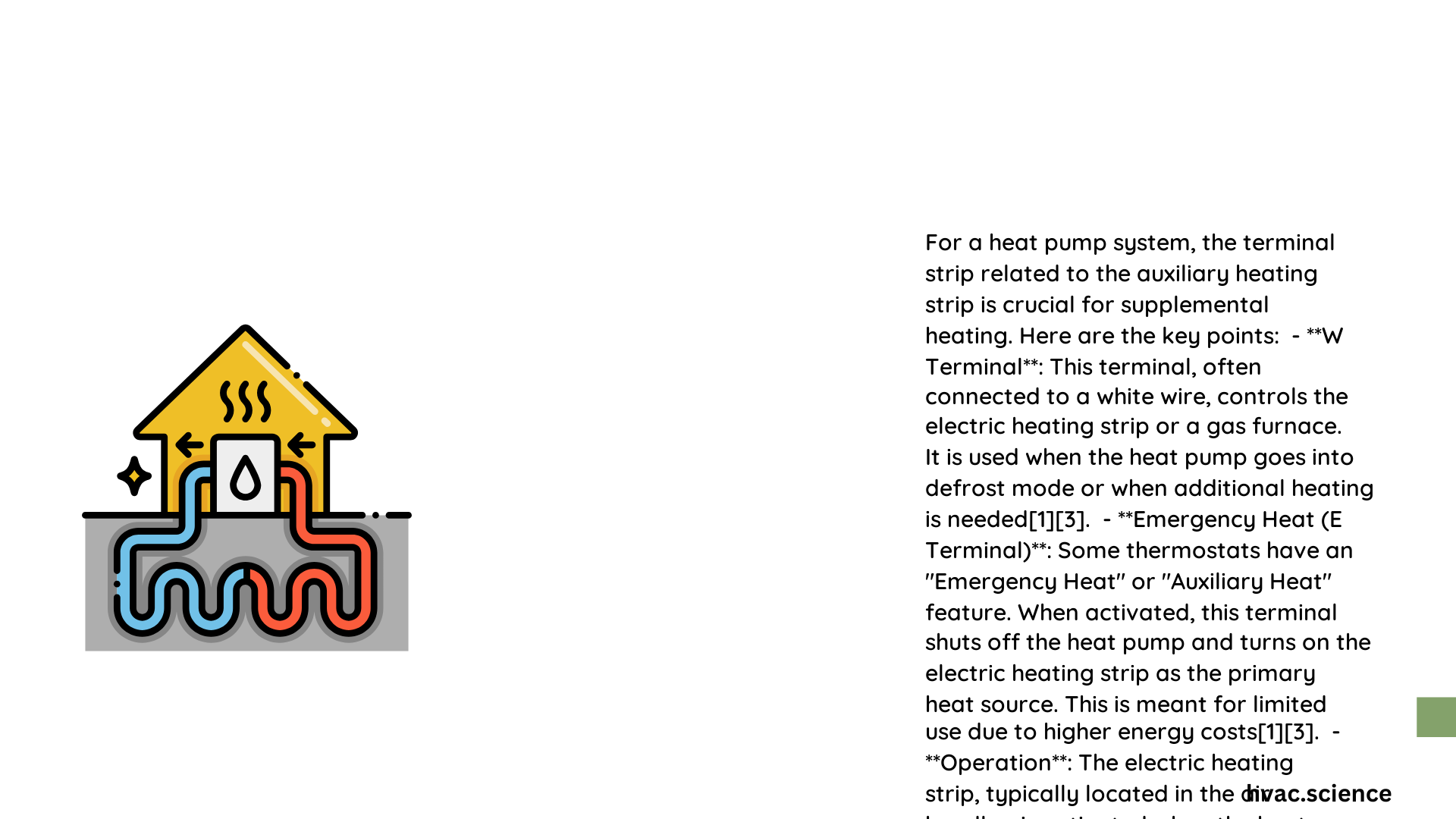A heat pump terminal strip is a critical electrical interface that enables precise communication between various HVAC system components, facilitating power distribution and signal transmission through strategically designated terminals. This intricate connection panel allows technicians to manage complex electrical interactions between thermostats, compressors, fans, and heating/cooling mechanisms with exceptional accuracy and reliability.
What Makes Heat Pump Terminal Strip Essential?
How Does Terminal Strip Enable HVAC System Communication?
The heat pump terminal strip serves as a central hub for electrical connections, translating thermostat signals into actionable commands for different system components. Its sophisticated design ensures seamless power routing and component activation.
Key Terminal Designations and Functions
| Terminal | Color | Primary Function |
|---|---|---|
| R/RC/RH | Red | Power Supply |
| Y | Yellow | Compressor Control |
| W | White | Heating Activation |
| G | Green | Fan Operation |
| O/B | Orange/Blue | Reversing Valve Control |
| C | Black | Common Wire Return |
What Are Critical Wiring Considerations?
Wire Gauge and Connection Requirements
- Recommended Wire Gauge: 18-20 AWG
- Voltage Standard: 24V AC
- Connection Precision: Exact terminal matching
- Insulation Quality: High-temperature resistant
How to Diagnose Terminal Strip Issues?
Troubleshooting Methodology
- Visual Inspection
- Check for loose connections
- Verify wire color-coding
-
Examine terminal corrosion
-
Electrical Testing
- Use multimeter for voltage verification
- Test continuity between terminals
- Measure resistance levels
What Professional Techniques Ensure Proper Installation?
Best Practices for Terminal Strip Management
- Pre-Installation Checklist
- Verify system compatibility
- Review manufacturer specifications
- Confirm local electrical codes
-
Use appropriate tools
-
Connection Sequence
- Power down system
- Label existing wires
- Disconnect old connections
- Clean terminal surfaces
- Secure new connections
- Perform systematic testing
What Advanced Diagnostic Strategies Exist?
Comprehensive Evaluation Techniques
- Signal Path Analysis
- Trace electrical signals
- Identify potential interference
-
Evaluate transmission efficiency
-
Thermal Performance Monitoring
- Check temperature-related signal responses
- Assess reversing valve functionality
- Evaluate system transition smoothness
Technical Insights and Recommendations
Expert-Level Considerations
- Use high-quality, temperature-resistant terminals
- Implement periodic maintenance checks
- Consider professional calibration
- Stay updated with manufacturer guidelines
Safety and Compliance
Critical Safety Protocols
- Always disconnect power before maintenance
- Use proper personal protective equipment
- Follow manufacturer-recommended procedures
- Maintain accurate documentation
Conclusion

Understanding heat pump terminal strip intricacies requires technical expertise, systematic approach, and continuous learning. Professionals must blend theoretical knowledge with practical implementation strategies.
